· 13 min read
10 Monetization Tips for Mobile Games in 2017

Chay Hunter
EVP, Marketing at GameAnalytics
Speak to anyone in the mobile gaming industry and the topic of conversation will always turn to one thing: monetization. Who can blame them? Statista predict that mobile games will generate $40.6 billion in revenue by the end of 2017. That’s more than double Facebook’s 2015 revenue. Not a number to sneer at.
Perhaps more noteworthy is that – as of January 2016 – this revenue was generated by less than 1.9% of the overall player base, showing a 0.4% increase from the same study in 2014, according to a report by the mobile marketing automation platform, Swrve.
Mobile gamers are spending more
Their study aggregates data from over 10 million purchasing players – from the minnows, to the dolphins, and the whales. Interestingly, at just 0.19% of the demographic the “whales” account for a whopping 48% of the total revenue.
Less than half a percent increase of in-app purchases over 2 years may seem underwhelming, but could it represent a glaring opportunity? An untapped 98% piece of pie? Could it be indicative of the fact that game developers and monetization managers alike are focusing all of their efforts on the whales – a niche subset of players – and neglecting the wider market? A market with different needs, and uncapped potential.
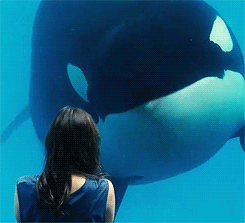
Below are 6 simple methods you can practice to encourage more non-monetizing players to spend cash in your game. After that, we’ve added another 4 tips to get the most out of those already spending. Point 7 onwards focuses on using game analytics to improve monetization.
Click here to jump straight to the analytics part.
1. Price virtual resources fairly
When considering the typical price points for in-game items, it’s not surprising that less than 2% of monthly active users convert. The largest available quantities of in-game currency often cost more than a brand new console title.
-
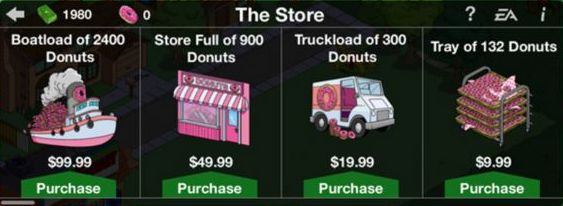
Store example from 2014
Expensive options are off-putting at best for the majority of players. Compare the above example from 2014 to the one below from 2016. The example below shows learnings that have been put in place by the developers. Framing the offer in this way generates more conversions by creating more perceived value.
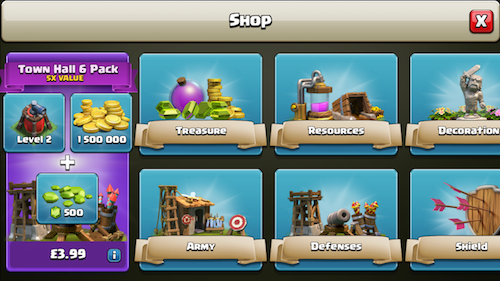
Alongside offer bundles, also consider experimenting with lower price points when the player has just started your game. Price points above $10 may in fact deter new users and incite a swift uninstall, contributing to the 75% average churn rate of new players after 30 days.
Using this tactic, more expensive tiers can then be revealed to players that have shown higher levels of engagement. Personalized offers should then be sent to the segment with the highest likelihood of monetizing.
Encouraging an initial purchase has long-term benefits; Soomla’s 2016 Q1 Mobile Gaming Data Report found that 13% of users who paid in one game will go on to make another purchase. A minimal cost to entry is the best way to motivate a user to take this initial leap of faith.
2. Generously reward players
Creating incremental difficulty is obviously essential to give players a sense of achievement and progression. However, adequately rewarding this skill is even more important for the ongoing retention of a player base.
Nothing kills engagement quicker than the realisation that in-game currency is simply too scarce to earn without parting with hard earned cash. Exceptional skill should be rewarded appropriately, ensuring that the player remains engaged, and therefore more likely to purchase at a later date.
-
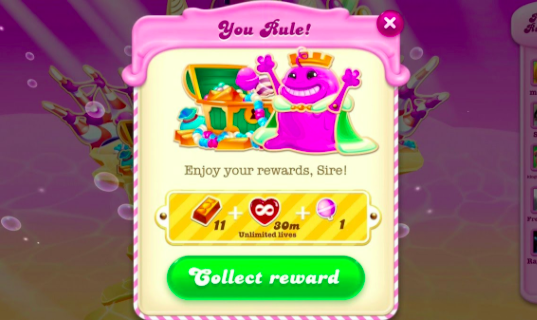
Reward players to engage them for longer
A future purchase can be baited with contextually targeted offers, based on data gathered in a free game analytics tool. Specific milestones can be created to identify common ‘choke points’ in player progression. If a user gets stuck, an automated offer can be triggered at the ideal moment, greatly increasing the chance of conversion.
3. Add new features worth paying for
Whether it’s continually adding new levels, consumables, or improvements to the overall game design, a successful premium game should constantly be evolving. Today’s mobile gamers are fickle, and there’s no shortage of competition in the marketplace. According to IB Times, the Apple App Store is growing by over 1000 apps per day.
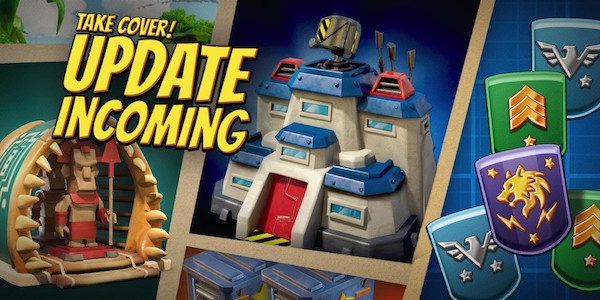
Player retention is key in order to prolong the continued financial success of your freemium title. Providing small yet frequent updates is the best way to cement the gaming habits of your users for long term player retention, and thus increase the chance of future purchases.
A good example of this is Candy Crush. This title by King Studios currently has a jaw-dropping 2680 levels and counting. King could have slowed down development a long time ago, but instead continue to invest time, money and resources into new level development.
4. Cultivate moments of joy
Any hardcore gamer understands the importance of the above. It’s that moment you leap out your chair in delight, after finding a rare amulet or completing a tough quest. Invariably, the more moments of joy – the better the game.
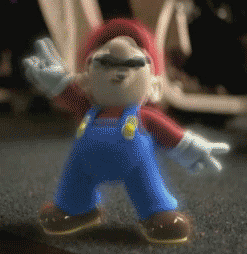
“Moments of joy” are the essential ingredients which keep players returning to your game, day after day. Without them, your game will undoubtedly lose traction and fizzle out of existence within a few months of release. Creating these moments should be less of an art and more of a science. You can use a free tool like GameAnalytics to begin to make sense of user interactions with your game.
Some of the most successful studios have mastered the art of getting players to return to their game multiple times a day. The studio Supercell (creators of Clash of Clans and Boom Beach), turned over $2.29 billion in 2015. Their model is clearly working.
Listed below are the 5 most popular mobile gaming titles and their respective daily revenue, as of Dec 2015.
- Clash of Clans (~$1.2 million)
- Candy Crush Saga (~$966,000)
- Kim Kardashian: Hollywood (~$625,000)
- Game of War – Fire Age (~$296,000)
- Slotomania (~$233,000)
- Farm Heroes Saga (~$196,000)
What do they all have in common? They each cultivate moments of joy through messaging that conveys positive reinforcement in the game design. Recognising, commending and rewarding the player’s skill encourages them to keep opening the app, day after day.
5. Target your messaging
When trying to influence more purchases it’s important to tailor your messaging to the right player, at the right time. This makes your attempts to drive conversions less of a “spammy”, one-size-fits-all approach.

A good way to achieve this level of customization is through contextual targeting. Relevant messages can then be sent if certain custom events are triggered. For example, an ideal time to send a special offer, such as a power-up, would be following a succession of deaths on a specific level.
This approach contextualises your offers, meaning you that you can perfect your messaging – even the tone of voice (depending on what action you want to influence). Tips and motivation offered in a time of struggle will help the player progress, ultimately keeping them engaged and more likely to convert further down the line.
6. Perfect your tone of voice
Your messaging is essential for driving engagement, sparking your players’ interest and influencing their actions. That said, this messaging needs to have a consistent tone of voice and personality. One of the best ways of achieving this is to write under a persona – a character that your players can relate with over time.
Introducing a persona can act as a powerful mechanism for influencing players’ actions, increasing monetization and driving engagement. It’s a tactic frequently put in place by the most successful game studios (think Tiffee Toffee on Candy Crush). Why? It creates personality – and this stimulates an emotional connection.
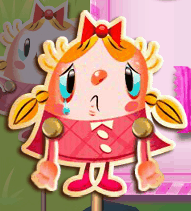
From a psychological perspective, the inclusion of this type of in-game “mascot” can significantly help to increase monetization; your players feel like they have a companion on their side – willing them to succeed. Someone who relates to them in the moments of joy… and in the times of struggle. Players are more receptive to messages if they come from a source that they can identify with.
7. Fix the leaks in your funnel
Let’s say you want to send a targeted offer to your player, but only after they’ve completed the first 5 levels of your game. Before that milestone, you know they’re not yet engaged enough to make a financial commitment. You don’t want to jump the gun with off-putting ads, so how would you go about targeting users only once they pass level 5? Easy: using funnel reports in a game analytics tool.
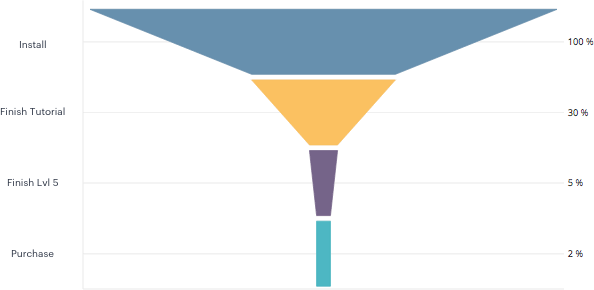
A funnel is a way of reporting progression through a structured sequence of events. A good example of a funnel in action is tracking where players drop-off; from this type of report you can draw conclusions which lead to effective optimization.
- Is the player grinding?
- Is this level too difficult?
- Are there too many obstacles in this section?
- Are there any error logs relating to this?
- Perhaps there’s a technical error causing the game to crash?
You get the point. Funnels are really powerful reporting tools. The more players that complete – or convert – through your funnels indicates a better overall state of game health. And, ultimately, a healthier game is more engaging – with more potential to generate revenue.
8. Recognize positive correlation with segments
Another tried and tested analytics technique for improving monetization is to identify correlation points within your game and report on these players using custom segments. Correlation points indicate a relationship between two different variables (such as your in-game metrics), which show similar trends when compared together.
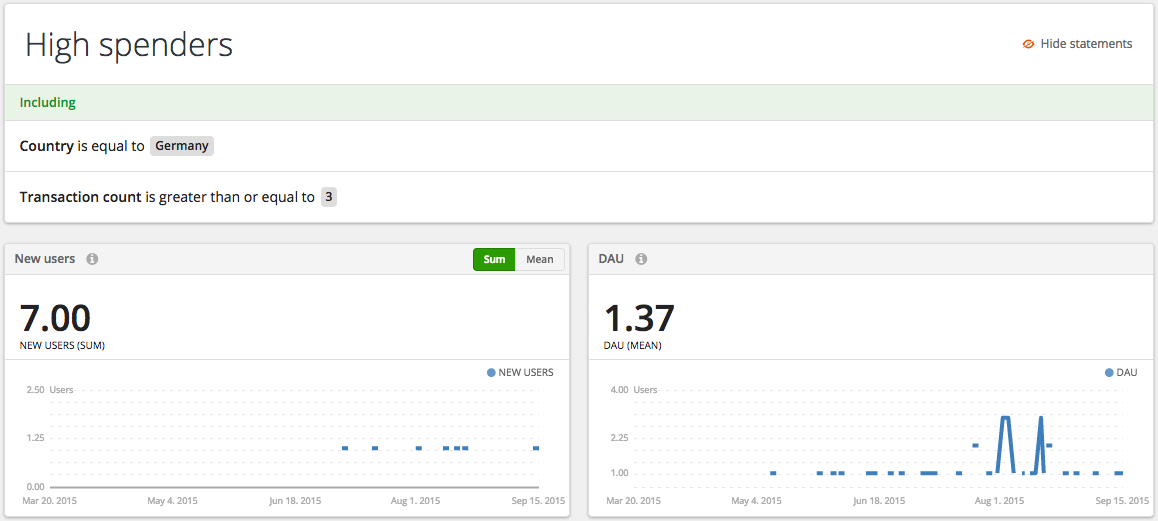
A good example of positive correlation could be that players who have connected their social media accounts are more likely to make a purchase at a later date. Conversely, an example of negative correlation could be that the more times one player kills another, the less likely that player is to be beaten as a result.
While this kind of correlation doesn’t necessarily equal causation (i.e. social activation directly driving in-game purchases), what it does indicate is how certain sets of events may influence your players. Identifying correlation points allows you to begin a process of testing and optimization using data as your driving force, rather than basing decisions on assumptions and gut instinct.
9. Keep track of player cohorts
A cohort report essentially groups users with common characteristics and allows you to measure specific KPIs that relate to this group, over a period of time. A good example of a popular cohort report would be to group players based on their “install date,” or the date that they successfully made their first in-game purchase. Another commonly used example would be to track player retention…
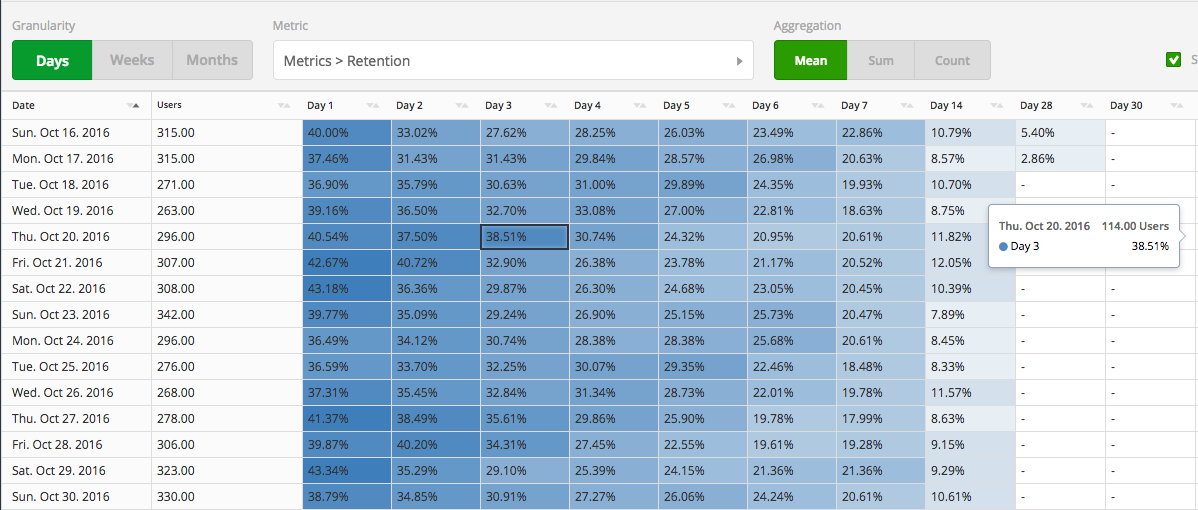
Examining the changing spending habits of player cohorts over different timeframes is a great indicator of the health of your game and effectiveness of your monetization strategy. If players continue to make purchases many months after initial install then you know your engagement tactics are working. If this same group begins to show a declining number of purchases then it might be time to introduce some new features.
Take a look at one of our previous blog posts for a more detailed account of how to use cohorts to measure player engagement. In this example, we examine “the golden cohort” (players that installed the game within a week of it launching on the app store), and compared this cohort to the users acquired in the subsequent 90-day period. This method of analysis provides insight which is perhaps the best way to measure changing retention timeframes, and thus increase monetization from engaged players.
10. Test and repeat
When using data to optimise your approach to improving monetization, it’s important to measure the outcomes of your changes. Reporting on your findings is the only way to quantify whether or not your initial hypothesis was correct, and if so – how can you take these results and optimise them even further?
If you’re scratching your head trying to figure out how to do this, look no further – we’ve got you covered. Take a look at our article on how to run an efficient mobile game test.
Using a statistical analysis tool for mobile games can help immensely with this process. GameAnalytics allows you measure and track over 50 core KPIs straight out-of-the-box, with minimal technical skill to get started. The earlier you instrument the tool in your game, the quicker you can begin understanding player behavior.
Conclusion
Ultimately, the financial success of any free to play game is intrinsically linked with how engaged it keeps its players. Therefore, improving monetization in your game is best achieved by understanding your groups of players. The best way to do this is by measuring actions, which allows you to give context to player behavior. If you know what motivates your players, they’ll keep returning. If you provide contextual, relevant and timely messages alongside this, they’ll keep spending.
Use a game analytics tool!
With GameAnalytics, making sense of player behavior is a whole lot easier. Our mobile-first game analytics tool lets you collect and report on a range of player metrics, out-of-the-box. All within a few minutes, following a simple setup process. We provide SDKs developed for nearly every major platform and game engine.
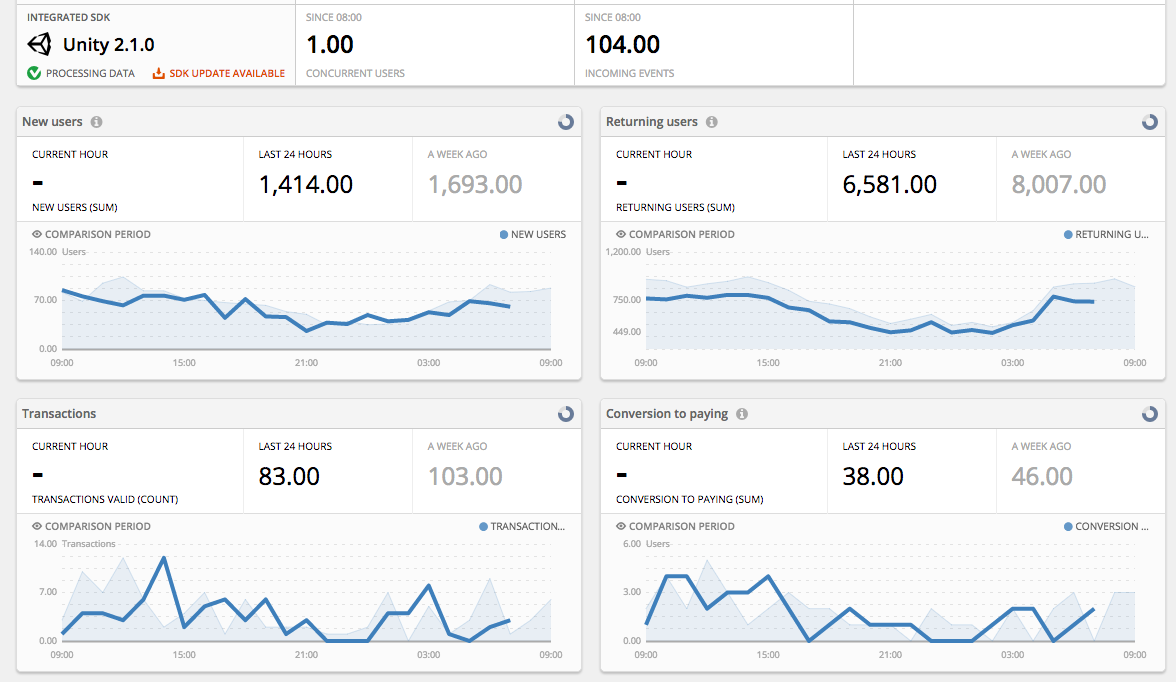
Quickly setup custom events after instrumenting our SDK, allowing you to track player progression, transactions and design. Measuring player behavior in this way allows you to draw meaning from these findings.
With progression, for example, you can spot sticking points in gameplay. You can then optimize the tough sections so players can reach their moment of joy faster. If you’re interested in finding out what’s causing your users to grind, check out one of our previous posts which examines why a player might be leaving your game.
On the opposite side of the spectrum, you can measure in-game resources and virtual economies to help you understand whether you’re being too generous with your gifts. If this generosity is hurting your game, it’s easy to scale back with confidence using data as your decision-maker.
Share these tips on Twitter…
? 10 Kickass Monetization Tips for Mobile Games https://t.co/Tw6Uu7t7V3 pic.twitter.com/9vwXtwrdf7
— GameAnalytics (@GameAnalytics) April 3, 2017